Skin is your magic mirror. It’s time to stop covering up skin issues with topical creams and makeup and take a closer look at what it’s trying to tell you.
In this podcast, I cover the 6 underlying causes behind skin issues and specific diet, lifestyle and skincare tips you can implement today to start addresses these root causes. And, I share exactly how to know which of these root causes are impacting you!
So, please enjoy this podcast…
If you have not done so already, I highly recommend that you get your customized skin profile here. It’s free and based upon your answers, it will give you great tips for glowing skin and vibrant health. Also don’t miss out on all of the latest tips to get glowing skin and vibrant health, be sure to follow me on Facebook, Pinterest and Twitter. And join the conversation!
Thank you, and we’ll see you next time on The Spa Dr. Podcast.
TRANSCRIPTION
Hi there. I’m Dr. Trevor Cates. Welcome to The Spa Doctor Podcast. Do you have skin issues or maybe you’re wondering about how your health might be showing up on your skin. Did you know that your skin can be giving you messages about your overall health? I call skin our magic mirror that gives us great clues about our overall health. It’s time to stop covering up those skin messages with topical treatments and makeup and really get to the root cause. That’s what my message is to you today and I want to share in this podcast today is about your skin, the messages it’s giving you, how it is your magic mirror, and the root causes behind the problems of the skin and how you can identify what root causes might be holding you back from having that clean, clear, youthful-looking skin that you deserve.
I want to start off by talking about some statistics that are kind of surprising, I think. The US dermatology market is expected to grow to $13 billion, over $13 billion by the end of this year. That’s a lot of money on dermatology. Acne is the most common skin condition in the United States, affecting 50 million Americans and costing over $3 billion a year. Acne is a problem around the world. It’s the eighth most prevalent disease worldwide.
According to the American Academy of Dermatology, adult-onset acne is on the rise in women in their 20s, 30s, 40s, and even 50s. It used to be that we used to think of this as something that was just for teenagers, but it’s not. It affects many of us, even later in life, both men and women. Here’s the other thing that I find really surprising and, actually, quite unfortunate. We’re going to be talking about more than acne today, but I just want to show this as an example.
The American Academy of Dermatology stated in February of 2016, just last year, they made a statement that there is not enough data to recommend dietary changes for acne patients. I find that so shocking and surprising that that is a statement that would be made. They go on to say that instead, they recommend treatments including topical therapy, antibiotics, isotretinoin or Retin-A, and oral contraceptives. All of these things are a bandaid approach. They don’t address the root cause. I’m sure that you know and have probably been frustrated with the fact that when you eat certain foods, it can cause you to break out in acne, maybe other skin conditions, too.
I want to shake up this a little bit and really ask some questions about food and how it plays a role. I hope that you’ll get some information today that’s going to help you shift that idea and that really understanding how our diet and lifestyle does play a role in our skin and including acne and other skin conditions. Now that being said, I understand that these topical treatments, the treatments recommended, can oftentimes help people with acne. I get that, but it’s not addressing the root cause. We’re not really helping people.
When we just cover it up, we can have more challenges with our health, our skin. It can get worse over time. It might temporarily be better, but in the long term, it’s not going to be helpful. Instead, looking at ways that we can support the body and maybe using those kinds of treatments temporarily and initially to help squelch the inflammation, to calm down the skin so that we can get a better handle on things. The problem is that many people are staying on these treatments much longer than they should and they’re developing side effects.
Hey, I get it. I was there when I was a kid. I had a lot of problems with my skin. I had eczema, hives, itchy skin, inflamed skin. I was given a lot of topical treatments and it would get better for a little while, but then I oftentimes had adverse reactions to the medications or developed allergies to those medications. It wasn’t until I really started to look at a more holistic approach with my own health and my skin that I started to notice a difference, and I see this over and over again in my practice with people with skin issues.
In addition to acne, I want to make sure that we go in and we talk about some other things, too. Rosacea is another common skin conditions that affects 16 million Americans, and eczema, dermatitis, atopic dermatitis is estimated to affect 32 million people in the United States. There are a ton of other skin issues. There’s psoriasis, dry skin, vitiligo, itchy skin, hives, infectious skin diseases like herpes and warts. The list goes on and on. Now again, the typical approach is to cover up, to suppress these without really looking for the root cause.
Now, I don’t want to badmouth dermatologists here. I’ve got some great friends that are dermatologists. This concept that the only approach is to cover it up, we need to look around that. Sure, there are dermatologic treatments that can help people with skin issues. There’s no denying that. That can be a great first step to get things under control when your skin is really inflamed. I do that with my patients. As a naturopathic physician, I can prescribe topical and oral medications when necessary, but it’s just a bandaid. It’s only temporary. If you keep using that approach, the problem is going to most likely just continue. It may even get worse and you may develop other health issues if you don’t already have those.
This is not meant to scare you. I want to empower you with information to help you. That’s why I wrote my book Clean Skin from Within. I want to talk to you about some of the information in the book and just know that you can get Clean Skin from Within. It is available. It’s available online, in bookstores. You can get it on Amazon. You could also find it in bookstores. You can order it off my website. It is available to you, but I want to go ahead and share some of this information.
I also want to point out another big skin issue that people talk to me about and that’s premature aging. We can’t stop the clock. We can’t do it. Time is going to keep ticking and we’re going to keep getting older. I get it. I’m in my mid-40s. I understand that we don’t want to look older than we are. Ideally, we want to look younger. Certainly, when we look youthful and young for our age, that is a good sign that’s showing up on our skin. If we have excess wrinkles and sagging skin before our time, then that’s a sign that something is going on that you want to address because it’s just going to keep coming up as a problem and if you’re not addressing the root cause behind it, it’s likely going to show up in your health in some other way.
Here’s the really great thing about this approach of clean skin from within is that not only will your skin improve, but it addresses root causes that it’s going to help improve your health overall. When I started off working in certain world-renowned spas doing my two-week program, it was originally designed as a weight loss program. Then at the end of the two weeks, not only were people losing weight, but they also mentioned that their skin cleared up, that their skin appeared more youthful, that they had more energy and they were sleeping better. They were able to achieve their ideal weight.
The thing is is that when you make certain lifestyle changes and really address the root causes, you’re going to improve your health overall and that can show up on your skin. You’re also going to be able to help change your genetic expression, which means a lot of times, we think about oh, I’m just stuck with bad genes. My mom, my aunts, my parents, they didn’t age very well, so I’m stuck with those genes or everybody in my family has acne or eczema and so I know I’m going to have those. Here’s the thing. You can actually change your genetic expression, the way that your genes show up in your health, by the lifestyle choices you make.
Let’s go ahead and talk about this. First, I want to explain that my approach to skin is different, as you can probably tell already. I want to cover with you my five holistic skin discoveries. Now, I started learning these at a really young age because I struggled with skin issues, so I really do understand. If you’re struggling with your skin right now, I completely understand what you’re going through because when I was a kid, I had a lot of skin issues and itchy hives and eczema and a lot of allergies that showed up on my skin. I tried a number of different conventional approaches, different medications, topical, oral, and nothing seemed to help. In fact, I started developing allergies to some of those medications, adverse reactions.
Luckily, my parents kept searching for options for me and they found a holistic practitioner. This is the one thing that turned my health around and I realized at a really early age how important it is to look at our skin differently and to look at our health differently and that there are different options and really addressing the root cause. I also learned that how skin can impact how we feel and how we show up in the world. As a kid, it was really challenging showing up at school. I had these little bumps on my face. I remember one kid called me chicken skin and that it was really hard to show up and be confident when you have skin issues, so I understand that part, as well.
Let’s go ahead. Let’s talk about my five holistic discoveries. The first one is that skin offers a direct reflection of what’s happening inside the body. Now, that’s what I’ve been telling you. This might be a new thing for you, but hopefully, it makes sense because our organs are not separate. They’re connected. Our skin is connected to everything else. It is our largest organ. It does offer a reflection of what’s happening inside. The second is that unfortunately, common prescriptions don’t fix the underlying problem. Now, it can provide some temporary solutions and some temporary relief, but you’re not addressing the six root causes that I’m going to be talking about in a moment.
The third is that the skin has a delicate pH balance and a community of bacteria that are crucial for its health. I’m going to talk more about that. The skin has what’s called a skin microbiome or skin microbiota, which are a balance of microorganisms that live on and protect the skin. One of the things that really impacts that is the pH of our skin. The pH of our skin, it does best in a mildly acidic environment, so think about this. Even water has a neutral pH of 7. That is too high for healthy skin. Now, the research does show this that the pH of our skin does best in this 4 to 4.5 pH range with skincare products that we use in the 4.5 to 5 pH, certainly lower than 5.5. Now, a lot of these cleansers and foaming kinds of ingredients and lotions actually have a high pH. If you have a bar of soap that lathers up, there’s a good chance that that means it’s going to have a high pH. That’s actually going to disrupt your skin’s natural defenses, including the skin microbiome.
The fourth thing is what you eat can have a big effect on your skin. I do disagree with the statement that diet doesn’t play a role in acne. I see this over and over again how the foods people eat impact their skin. You’ve probably seen it yourself, so you probably already know that diet plays a role. The fifth thing is the products you put on your skin can affect your internal health. On average, we use nine personal care products a day, which exposes us to 126 unique ingredients. That’s according to the Environmental Working Group. The problem is that this is not well-regulated. In Europe, they’ve banned over a thousand ingredients in personal care products, but in the United States, only 11 ingredients have been banned by the United States FDA, so it is really up to us to look at these.
It is true that what we put on our skin can get absorbed. It doesn’t just sit on the surface. A lot of times, we mindlessly put products on our skin, lotions, sunscreens, makeup without thinking about how it can be absorbed. Think of it this way. If you can’t put it in your mouth, you probably shouldn’t be putting it on your skin. I’m going to say that again. If you can’t put it in your mouth, you probably shouldn’t be putting it on your skin.
Now, I’m not saying that skincare products are supposed to taste great. I certainly understand my skincare products. There’s one of the steps I think tastes pretty good, but the other ones, I don’t know. I wouldn’t want to consume them regularly just because of the taste. If you can’t put them in your mouth, you probably shouldn’t be putting them on your skin because they can get absorbed. That’s why people use hormone creams, nicotine patches on their skin because those things will get absorbed into the bloodstream. Many personal care products contain hormone-disrupting chemicals. What that means we’ll get to in a moment, but just keep in mind that what you put on your skin can impact your overall health, so that’s the fifth.
Now let’s go ahead and dive into the six causes behind imperfect skin. The six root causes, I’m going to just mention all six of them and then I’m going to go into a little bit more depth on each of these and give you two tips for each. Inflammation, microbiome disturbance, oxidative damage, blood sugar issues, nutritional deficiencies, and hormonal imbalances. Let’s go through each one of those.
The first one is inflammation. Inflammation is a really big trigger, a big root cause. Internal inflammation causes what I call skinflammation, which internal inflammation showing up on the skin as a skin problem is really skinflammation. Inflammation can be triggered by foods, by toxins, by an unhealthy gut and so what we want to do to address this inflammation is first … I’m going to give you two tips. There’s much more in my book, Clean Skin from Within, but I’m going to go ahead and give you a couple of tips to get started. One is to eat anti-inflammatory foods. I really delve into this in the book in the chapter on Clean Plate. What you want to do is to avoid the top trigger foods like sugar and dairy. In my book, I go into 10 of them, but those are the two big ones I want you to start thinking about how you can reduce those, start reducing those in your diet today.
Then another thing to think about with inflammation is to use anti-inflammatory ingredients topically. I really believe that about 80% of your skin comes from internal issues. It’s about 80%, but 20% is also what you use topically. For each one of these root causes, I’m going to give you a tip on diet, internal or lifestyle, and then a tip on external. For inflammation, eating anti-inflammatory foods, following the clean plate diet, cutting out the sugar and dairy and other trigger foods, finding your trigger foods and avoiding them, and then instead eating anti-inflammatory foods like wild Alaskan salmon and avocados and antioxidant-rich foods. Then topically, using anti-inflammatory ingredients like teas and nice oils like sea buckthorn fruit oil is high in Vitamin C. That’s a couple of tips on inflammation.
Now, I’m going to continue going through these six root causes and I’m also going to tell you how you can find out which of these six root causes are an issue for you. I’m going to tell you about that in just a moment, so hang tight on that. I want to get through these. The second root cause is microbiome disturbance. Microbiome disturbance happens internally in our gut, as well as externally on our skin. Our gut microbiome directly impacts our skin microbiome, so when we talk about internally what to do and that 80% that I was talking about, we want to do things that help improve digestion and our gut health and the balance of the good bacteria that live in and protect our digestive system and so doing things like eating probiotic-rich foods and prebiotic-rich foods.
Probiotic-rich foods are going to be things like fermented vegetables, sauerkraut, kimchi, the good kind, the kinds that really have these active cultures, coconut yogurt, fermented kefir and things like that. I prefer people to do the coconut version of that rather than the dairy. Prebiotic-rich foods are the foods that are going to help increase and improve the probiotics and help build those. Those are going to be fiber-rich foods and so you want to increase your fiber intake. Eating those things are going to be helpful and helping internally with your gut microbiome, which will, in turn, help with your skin microbiome.
Then topically, what you want to do to help with your skin microbiome is to make sure that you’re using skincare products with that mild acidity, so that 4.5 to 5 pH range. If you don’t know if your skincare products have that pH, contact the manufacturer and find out. You could also use the Spa Dr. Daily Essentials. My skincare line is in that. We designed the products to be in that mildly acidic range, so it helps support the pH of the skin and improve the skin microbiome. You also want to be avoiding topical products that can disrupt the skin microbiome, things that have antimicrobial agents like triclosan, so be careful with those.
The third thing is the oxidative damage. That’s the third root cause. Oxidative damage occurs where you’ve seen people that have lots of sun exposure and how quickly their skin ages and the hyperpigmentation, uneven skin tone that can really happen with that, even skin cancer. Those are signs of oxidative damage on the skin. Oxidative damage occurs from sun exposure, but it also occurs from exposure to toxins, so air pollution is a big factor that triggers oxidative damage and the free radical damage that really speeds up the aging process and predisposes us to certain diseases like skin cancer. We also want to do things to reduce toxins in our environment.
Internally, following the recommendations in my book on Clean Body. In that chapter, I explain how to reduce the toxins in your air, in your water, in your food, and also things that will help stimulate your liver and kidneys so that your detoxification pathways are working well. Then externally, protecting your skin on the outside, using a good sunblock when you go out in the sun that contains zinc oxide instead of the chemical sunscreens like oxybenzone. You don’t want to use the chemical sunscreens because many of those have been connected to hormone-disrupting effects, so zinc oxide-based sunblock. Also using skincare products that contain antioxidants on the outside, as well as getting antioxidant-rich foods and maybe even supplements on the inside. For example, I have a supplement astaxanthin omega krill and that astaxanthin is a really potent antioxidant that helps protect the body from the inside out.
The fourth root cause are blood sugar issues. You want to do things with that because here’s the thing with blood sugar. When we eat foods that are high in sugar or foods that turn to sugar, it increases our blood sugar. It causes issues with glycation in the body. Glycation is one of the big things that speeds up the aging process. What happens is glucose will bind to proteins in the body and it’ll bind to collagen in our skin. Instead of collagen having that nice, firm texture that gives us a youthful look, it’ll make it more rigid and less elastic because that binding of the glucose to the collagen makes the skin more rigid and less elastic. You’ll get wrinkles, sagging skin, premature aging, so that’s one of the reasons we want to be careful with blood sugar issues.
Also, when our blood sugar is off balance, it can predispose us to other skin issues. People that get multiple skin tags, for example, oftentimes, it’s a sign that you’ve got some blood sugar imbalances. Also, when our blood sugar increases from eating a lot of sugar, we have an increase in blood sugar, it increases insulin and that can trigger excess sebum production, the oils in our skin, and androgen activity, which will trigger acne, the most common skin condition. That’s a few examples of how blood sugar impacts our skin.
One of the biggest things is eating a balanced diet, cutting back on the sugar, eating more balanced meals, not just sugar, but foods that turn to sugar like fruit juice high in sugar. Even though it doesn’t say sugar on the label, watch out. Look at the sugar content. Fruit naturally contains sugar. I’m not saying you shouldn’t eat any fruit, but you want to eat it in moderation. You want to eat it balanced way. Getting a smoothie with a bunch of fruit and fruit juice is actually not going to be healthy for you. You want to get a balance with a protein, fats, vegetables, other fiber that you can get in there to balance it out. I have lots of smoothie recipes in my book Clean Skin from Within, also other recipes that will help you make sure that you’re eating foods that are balanced like this.
The fifth thing … Oh, wait, one last thing about blood sugar issues is that I talked about internally what to do, so the second tip externally using ingredients that are going to help protect your skin because there are a lot of changes that can occur in your skin if you’re struggling with blood sugar. In the meantime, you want to be using antioxidant-rich skincare products, so things like CoQ10 and resveratrol. Really paying attention to the Clean Slate part of the book is going to be helpful for you.
Moving on to the fifth root cause, nutritional deficiencies. This is a very common trigger for skin issues. For example, there’s a common condition called keratosis pilaris and many people don’t realize that there’s a nutritional component often with this. It oftentimes shows up as the little bumps on the backs of the arms and the upper arms. Sometimes they’re on the buttocks, but mostly on the backs of the arms. Sometimes people think it’s dry skin or little pimples on the backs of their arms, so this is a very common skin issue, but it’s oftentimes due to a zinc or essential fatty acid deficiency. Either you’re not getting enough of those foods in your diet that are rich in these or your digestion is not allowing you to absorb these nutrients. This is the thing with nutritional deficiencies is there’s that gut component to it where you’ve got to have good digestion. You could have the healthiest diet on the planet, but if your digestion’s not good, you’re not going to absorb the nutrients. You can still have nutritional deficiencies.
Sometimes I have patients that come in and they say, “Yes, but I take these supplements and I eat these great foods and I still have this skin issue.” Then when I look closely, that’s because they’re not digesting and absorbing the nutrients from the foods they’re eating, so get back to improving your digestion, making sure that you’re getting nutrient-dense meals.
Then on the outside, a lot of the common prescriptions for skin issues are a topical steroid. You don’t have a steroid deficiency. That’s not really going to help your skin. You want to look at nutrients that actually can nourish your skin on the outside, things like Vitamin C and Vitamin A. I like Vitamin A in its natural state, that’s naturally occurring, like those nutrients being naturally occurring as you find them in nature. Sea buckthorn fruit oil, for example, has both of those nutrients, Vitamin C and Vitamin A, so you don’t actually need to isolate those nutrients, necessarily. You can get those as they’re found in nature.
The sixth root cause is hormonal imbalances, very common root cause with skin issues. Now, I want to keep this in mind before you glaze over thinking oh, hormones don’t relate to me. Hormones are not just sex hormones. We’re not just talking about estrogen and progesterone and testosterone. It’s also your adrenal glands, your adrenal hormones that are impacted by stress in your life. That can impact your skin. For example, if you have imbalances in cortisol and you tend to get these spikes in cortisol, the stress hormone, that can trigger inflammation and trigger your skin issues to worsen. Thyroid is another big one. If you have low thyroid function and this is very common right now, then you could have dry skin. These play a role and then also, insulin is a hormone. Insulin is related to blood sugar and blood sugar balance, metabolism, weight, all of that plays a role, so think about what might be playing a role in your health and your skin.
Here are a couple tips for hormone imbalances. One is stress management. I cover a lot of tips in the Clean Mind section of my book on easy ways to start managing stress. I know sometimes it just seems too good to be true that stress is a contributing factor, but there’s stress management that’s going to be helpful. It’s true. It really does help and figuring out a practice that works for you, whether it’s starting out with a two-week program that’s in my book or something you find, hopefully, longterm solutions, meditation, breath work, certain practices, forgiveness exercises. Those all can be very helpful at helping balance your hormones.
Another thing is the skincare ingredients that you use, making sure that you’re not using personal care products that have hormone-disrupting chemicals. They are so common. They’re in fragrance, parabens, and so many other personal care products. In my book, in the Clean Slate chapter, I talk about 20 ingredients to avoid and why and the research behind them and how hormone-disrupting chemicals play a role in all of this. You want to use clean products. As we get older, I know we’re tempted to use more and more products that have these hormone-disrupting chemicals in them, but this is the last thing we need when our hormones are already changing with age. Please use clean, nontoxic ingredients and look for ones that have adaptogenic herbs in them. These are fantastic herbs, things like rhodiola and ashwagandha that can help de-stress our skin on the outside. They can also be good ones to take internally. Okay.
Then also, you might be thinking okay, there are six root causes here. Not all of them apply to me. How do I know? Here’s how you find out. I have created a skin type quiz. I talk about my five skin types in the book. They’re Amber, Olivia, Sage, Emmett, and Heath, fantastic way to look at the skin differently. I gave them all human names because I see my patients as people, not just dry skin, oily skin, mature, sensitive, but really they’re people. You’re people. You want to get the root cause. You want to look at things holistically, so that’s how I redefine the skin types.
There are five skin types. You can just go to theskinquiz.com to take the skin quiz. It’s free and it just takes a few moments. There are just a few questions you get. Then you’ll find out which of these skin types are you and each one of these, I’ve defined them based upon the root causes behind them. They’ll have two, three, four root causes, not all six. Then you can really hone in on addressing your issues because you’re all unique. Everybody is different. This is a way to help individualize what’s necessary for you and addressing your root causes. Just go to theskinquiz.com. You can find out more about the quiz there. It’s free and you’ll get some recommendations based upon your skin type.
Then in my book, Clean Skin from Within, in chapter six, I tell you how to individualize the two-week program based upon your skin type, so I have tables with supplements to consider, dietary changes, skincare changes to, modifications to make based upon your skin type because that is going to help you get to the root cause.
Let’s see, is there anything else? Oh, so if you want to find out more about my book, the skincare products, you can go to thespadr.com. Doctor is abbreviated D-R, thespadr.com, or you can go straight to the store by going to store.thespadr.com. You’ll also find lots of information there. Just remember that it’s important to keep it simple. I’ve done everything I can to help keep this simple for you because I know. I’m a single mom with three kids. I know how busy we get and how overwhelming all the information is out there.
With this book, I put it all together in a simple program that covers Clean Slate, Clean Plate, Clean Body, Clean Mind, and a two-week program with recipes that are delicious, easy to make, and I tested them out on my kids, so they’re kid tested and approved. Just remember it doesn’t have to be complicated and overwhelming, but you’ve got to stop covering up and suppressing skin issues and get to the root cause because your skin’s going to be better and your overall health is going to be better. I hope this has been helpful today and I will see you next time.
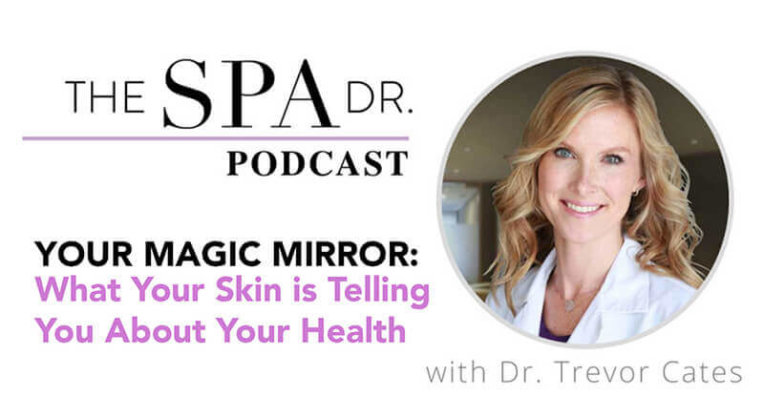
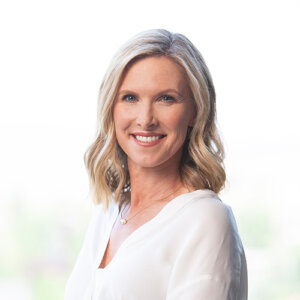
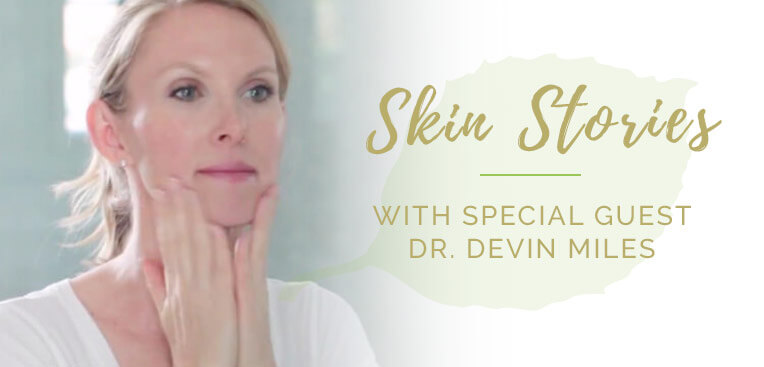
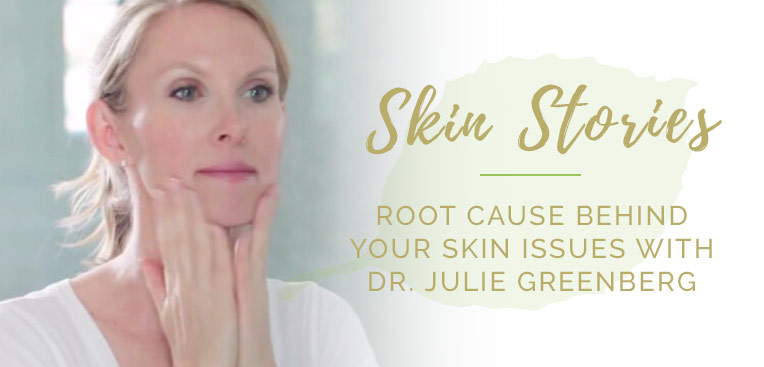
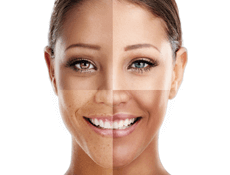
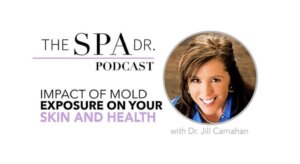


Reader Interactions